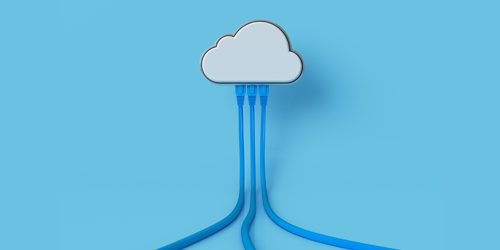Looking to move your ERP application to the cloud? To get started, it’s important to understand the two most leveraged migration path alternatives that organizations take. In this post, we’ll take a look at both paths, the pros and cons, and provide tips for making your move successful.
Re-host (a.k.a. Lift-and-Shift)
The first path is called Re-host (or Lift-and-Shift), where you lift your existing system and migrate it to the public cloud environment as-is. This Re-host option is described by some services providers as the most straightforward and least disruptive way to adopt a cloud-computing model. But is it? While the simplicity and speed of a Re-host migration have big advantages on the surface, a major drawback of this method is that by replicating the existing system in the public cloud, you also replicate issues you had with your on-premise infrastructure. Our friends at A Cloud Guru refer to this drawback as the “Lift-and-Shift Shot Clock” in a very entertaining article by writer, Forrest Brazeal. By choosing to “drag and drop” your old system into the new environment without taking the time to re-platform by utilizing the power of AWS services, you’re likely to create future expenses, complications, and downstream work to optimize your system.
Bottom line? The allure of a Re-host project being fast and low cost can quickly become a more expensive, higher-risk ERP migration option for your organization. But, for the right type of workload, Lift-and-Shift can work for a temporary need, or as a first step into cloud computing.
Re-platform (a.k.a. Lift, Tinker, and Shift)
To leverage the true power of cloud-based application solutions, we recommend the Re-platform (or Lift, Tinker, and Shift) migration option. This Re-platform option is a process that starts by exploring the original application, breaking the application down into different components, and, finally, re-architecting to a cloud-optimized application that takes advantage of a pay-only-for-what-you-consume model. This option leverages value-added cloud services and uses well-architected design concepts. The cloud transformation process takes more work upfront, but it saves material time, money, and resources in the long run.
The Lift, Tinker, and Shift model can require a longer project timeline and potentially higher initial transition costs compared to the Lift-and-Shift model. However, these disadvantages are offset when you consider the time and expense of re-doing design that is not working well down the road. And to make the entire process easier, AWS offers a number of out-of-the-box technologies that solve common problems that minimize the amount of effort such as the utilization of the AWS RDS service for database management.
Leveraging the Power of the AWS Cloud
When you remove speed-of-implementation from the equation, the Re-platform option is the clear winner for organizations that intend to fully embrace the cloud over the coming years. Re-platforming allows you to build larger applications, scale your system in the future without starting over, and more fully optimize your unique cloud solution. Such optimizations can include security compliance, cost controls, data governance, and much more.
Partnering with an experienced managed services or consulting provider can help hash out the complexities of moving your system to the cloud. Outside expertise also can address organizational gaps ahead of time, which speeds time-to-market. Moving your application from a traditional model to a cloud-based solution provides you the opportunity to rethink your infrastructure and innovate on new processes that will vastly improve your existing operations.
Sierra-Cedar has been helping organizations migrate and manage their applications – including PeopleSoft – for more than 25 years in traditional datacenters, private cloud environments, and AWS public cloud. To find out more about optimizing the AWS Cloud for your organization, watch our related webinar or email us.
